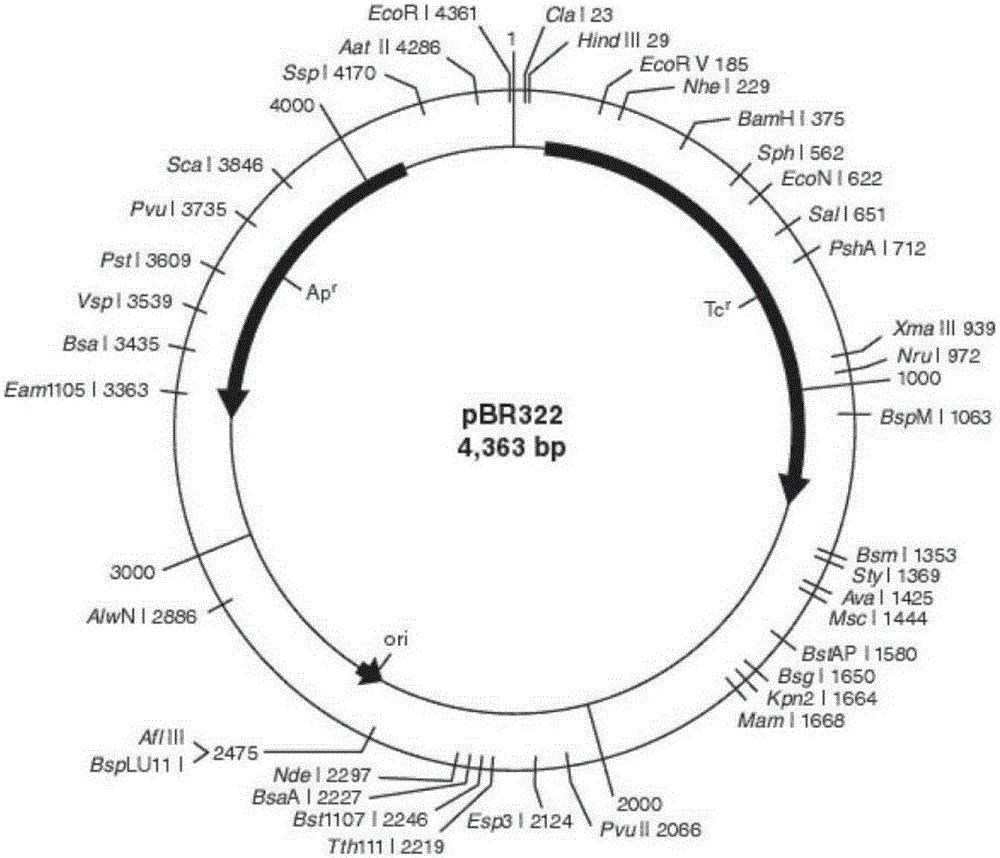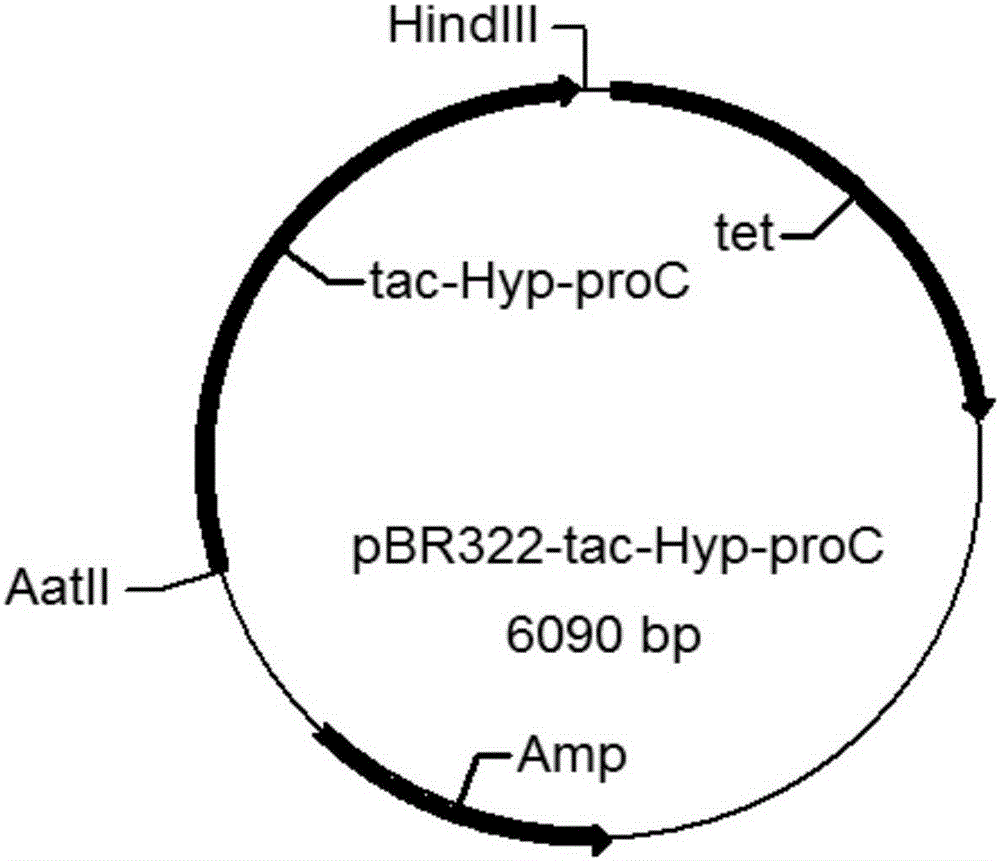Bacteria for L-hydroxyproline production and application of bacteria for L-hydroxyproline production
A technology of hydroxyproline and Escherichia coli, applied in the field of microorganisms, can solve problems such as high price, long fermentation period, polluted environment, etc., and achieve the effects of improving product yield and quality, reducing the use of inducers, and reducing environmental pollution.
- Summary
- Abstract
- Description
- Claims
- Application Information
AI Technical Summary
Problems solved by technology
Method used
Image
Examples
preparation example Construction
[0033] The preparation method of chloramine T solution: 1.41g of chloramine T (product of Shanghai Aladdin Biochemical Technology Co., Ltd., product catalog number is 104060) was dissolved in 10mL of water, then 10mL of n-propanol and 80mL of buffer solution were added in sequence, and mixed evenly. Chloramine T solution was obtained. Preparation method of the buffer solution: 50 g of citric acid, 26.3 g of NaOH and 146.1 g of crystalline sodium acetate were dissolved in deionized water, and the volume was adjusted to 1 L, and then mixed with 200 mL of water and 300 mL of n-propanol to obtain a buffer solution.
[0034] The preparation method of the developer: fully dissolve 10g of p-dimethylaminobenzaldehyde with 35mL of perchloric acid, then slowly add 65mL of isopropanol and mix well.
[0035] The medium involved in the following examples is as follows:
[0036]LB slant medium: solute and its concentration are: tryptone 1g / 100mL, yeast extract 0.5g / 100mL, sodium chloride 1...
Embodiment 1
[0041] Embodiment 1, construction of recombinant plasmid pBR322-tac-Hyp-proC
[0042] 1. Artificially synthesize the double-stranded DNA molecule shown in Sequence 1 of the Sequence Listing. In this double-stranded DNA molecule, the 1st to 8th positions from the 5' end of Sequence Listing Sequence 1 are the restriction endonuclease AatII restriction endonuclease recognition sites, the 9th to 62nd nucleotides are the tac promoter, and the 63rd nucleotides are tac promoters. The 878th nucleotide is the coding gene of proline hydroxylase, the 895th to 1701st nucleotide is the coding gene of dihydropyrrole-5-carboxylate reductase, and the 1705th to 1723rd nucleotide is T7 As for the terminator, positions 1724 to 1731 are the recognition sites for restriction endonuclease HindⅢ.
[0043] 2. Double-digest the artificially synthesized double-stranded DNA molecule in step 1 with restriction endonucleases AatII and HindIII, recover the digested products, and obtain fragments.
[0044...
Embodiment 2
[0048] Embodiment 2, knockout of putA gene and construction of recombinant Escherichia coli
[0049] The nucleotide sequence of the putA gene in the genomic DNA of Escherichia coli BL21(DE3) plysS is shown in sequence 4 of the sequence listing.
[0050] 1. Obtaining target DNA homologous recombination fragments
[0051] Follow the steps below to obtain targeted DNA homologous recombination fragments:
[0052] 1. According to the nucleotide sequence of the putA gene and the gene sequence encoding kanamycin in the plasmid pKD13, a pair of homology arm primers was synthesized by Treasure Bioengineering (Dalian) Co., Ltd. The homology arm primer pair contains two primers, named respectively for putac1 and putac2.
[0053] The nucleotide sequences of putac1 and putac2 are shown in Table 1. Wherein the single underline is the upstream segment of the putA gene, the dotted line is the downstream segment of the putA gene, the wavy line is the upstream segment of the nucleotide seque...
PUM
 Login to View More
Login to View More Abstract
Description
Claims
Application Information
 Login to View More
Login to View More - R&D
- Intellectual Property
- Life Sciences
- Materials
- Tech Scout
- Unparalleled Data Quality
- Higher Quality Content
- 60% Fewer Hallucinations
Browse by: Latest US Patents, China's latest patents, Technical Efficacy Thesaurus, Application Domain, Technology Topic, Popular Technical Reports.
© 2025 PatSnap. All rights reserved.Legal|Privacy policy|Modern Slavery Act Transparency Statement|Sitemap|About US| Contact US: help@patsnap.com



